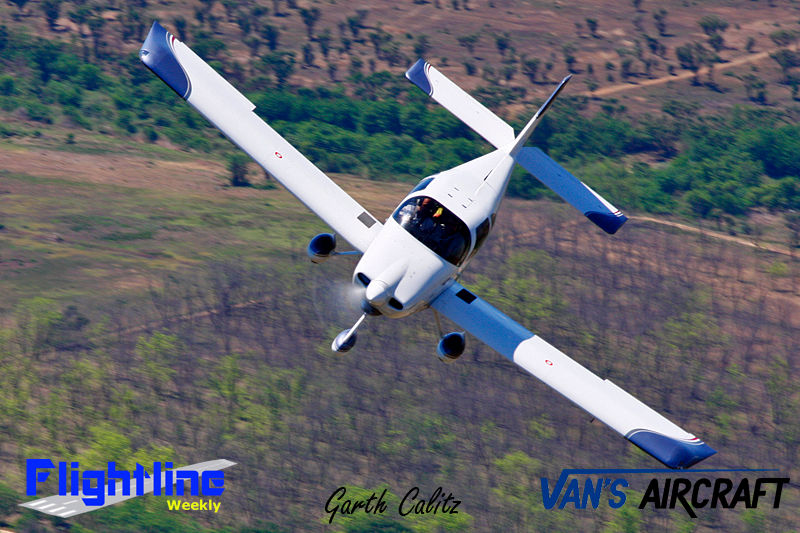Vans RV–10 - The Obvious Choice
- Garth Calitz
- Dec 4, 2018
- 3 min read
The performance, handling and cost of the RV-10 make it the obvious choice in the limited field of four-seat kit airplanes, and make it a viable alternative to four-seat production airplanes singles or twins as well.

The architect of the line of Van’s aircraft, Richard van Grunsven, designed the RV-10 to satisfy a market demand for a four-seat version of the popular RV series aircraft. The RV-10 was designed from the start as a touring aircraft and as such it forgoes the aerobatic capabilities and the lighter handling common to the aircraft in the RV line from the RV-3 to RV-8. Instead the RV-10 design focuses on greater stability and payload.

The RV-10 is a four-person airplane, not just an airplane with four seats. It will carry four adults, full fuel and 30 kilograms of baggage. Both front and back seats will hold people up to 2 meters tall and provide them with ample leg and headroom. Composite gull-wing doors let occupants board from both sides very comfortably.

The RV-10 is designed to fly well on various versions of the bulletproof six-cylinder Lycoming O-540 engine, developing between 235 and 260 hp. The most popular is the fuel injected 260 hp Lycoming IO-540.
As we know when many pilots say "performance", they really mean "speed." The RV-10 is quite a fast airplane with a cruise speed just under 170 knots – but speed is only part of the story.

The RV-10 derives its high cruise speed from a clean, light airframe, instead of from a big, consumptive engine. This means that cruise at lower speeds can be very economical. Many pilots often choose to cruise at 50-55% power and take advantage of the economy available there and with the price of Avgas skyrocketing economy has become a big factor choosing an aircraft. At 150 knots, the RV-10 is getting more kilometres pre litre than most of the luxury cars and SUVs it is flying over.

RV’s are known for short-field capability and the RV-10 is no exception. Even at gross weight, the RV-10 can operate out of very short runways and climb well at high density altitudes. At the end of a flight, the generous wing area, big slotted flaps and robust steel rod landing gear allow the RV-10 to land at virtually any small airport -- grass, gravel or paved. If you can land closer to your destination, you can gain a lot of time over "faster" airplanes that must use big paved airports a long way from town.

Occupant protection is an important design criteria on the RV-10, the composite cabin top provides roll-over protection. The cabin interior is designed around Oregon Aero seats and seat cushions, (provided in the kit) which provide the best available impact mitigation and comfort. Like all other RVs, the RV-10 has impressively low stall and landing speeds. If necessary, it can be safely landed in very small spaces at speeds that give the occupants the best possible chance of escaping injury.

The baggage compartment will accept in excess of 50 kilograms of "stuff" loaded through the baggage door on the left side. If fewer than four people are traveling, the rear seat backs may be removed in a couple of minutes for extra baggage space.

"If your mission includes more than two people, and you like airplanes that perform and handle well, you really owe yourself a ride in an RV-10."

RVs have always enjoyed a reputation for excellent handling qualities. The RV-10 continues this tradition, in a manner appropriate to a four-seat aircraft. It is a very responsive airplane, but at the same time stable and easy to fly. It is not an aerobatic airplane, so flick-of-the-wrist sensitivity is not the point. Pilot workload is very low, because the airplane responds quickly and positively to small control inputs from the between-the-knees sticks and rigid push-rods running on ball bearings. It is not the least bit "twitchy" and does not require constant attention to maintain heading or altitude. A long trip in the RV-10 can be positively relaxing.

General characteristics
Crew: Pilot
Capacity: 4 occupants (Including Pilot)
Length: 7.44 m
Wingspan: 9.68 m
Height: 2.64 m
Wing area: 13.7 m²
Empty weight: 753 kg
Loaded weight: 1225 kg
Max. takeoff weight: 1181kg
Performance
Never exceed speed (VNE) : 200 kt
Cruise speed: 175 kt
Stall speed: 55 kt
Range: 1,000 miles Cruise 55% power at 8,000 ft
Service ceiling: 20,000 ft
Rate of climb: 1,450 ft/min
Wing loading: 18.6 lb/ft²



























Comments